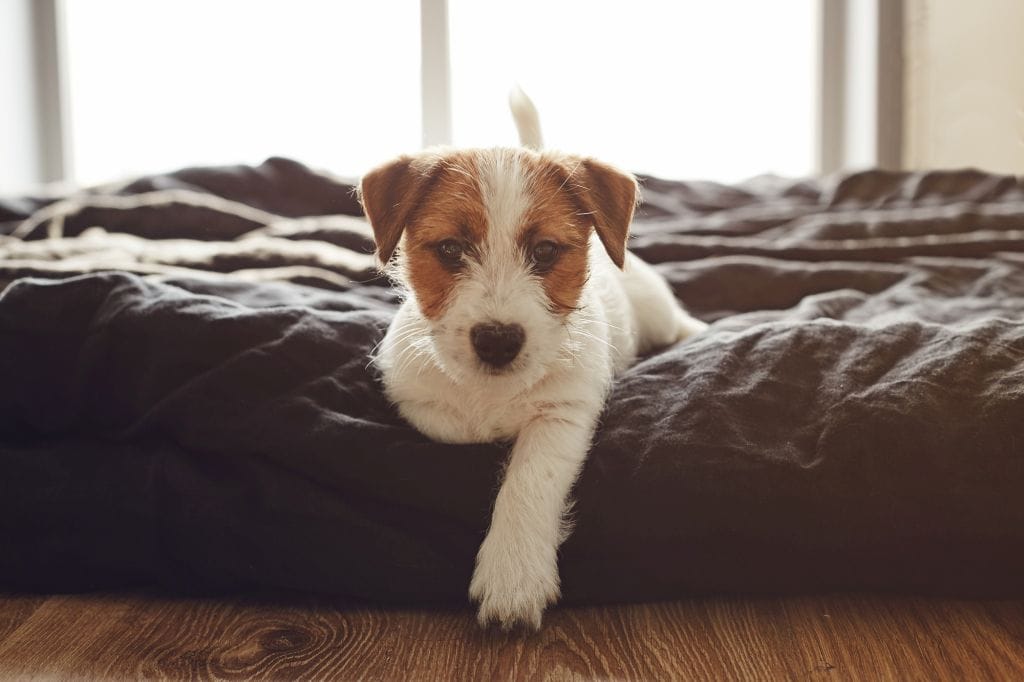So you reached the decision that your dog needs a bed. Maybe your veterinarian recommended a dog bed based on your pet’s joint problems. Perhaps you are tired of your four-legged friend taking up your entire bed.
Regardless of the reason for your momentous decision, what comes next? Categorizing your pet’s needs and coordinating them with what you want in terms of care and style will help you choose the best dog bed.
By Bedding and Need
Your dog’s bedding needs should be central when you shop for his new bed. One choice might be an orthopedic bed whereby your dog needs a bed to conform to his form and yield to pressure points.
You may want a dog bed you can carry with you everywhere. These beds need to be lightweight and able to withstand being constantly thrown around.
Does your dog like to dig in his bed? Roughhousing by your dog will dictate how durable a cover you need. What if your dog is incontinent? You need a combination of a supportive bed and a waterproof liner and maybe even an additional pad.
Donut and Bolster Dog Beds
Many dogs not only like to curl up to sleep but also enjoy lying against a wall. For these dogs, bolsters on their beds serve them well. Bolsters are ledges that can be at either end of a mattress, like a headrest, or around the perimeter of the bed like the backrest of a sofa.
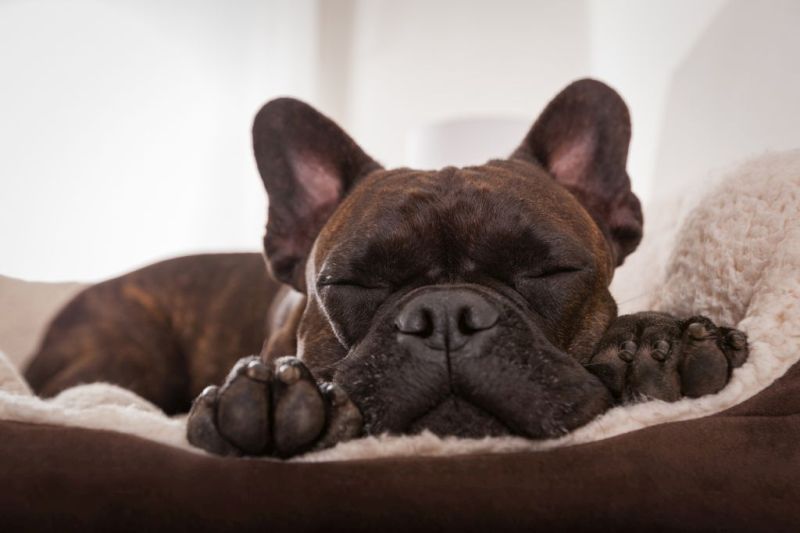
A surround-system bolster is especially good for dogs who like the extra feeling of security or dogs who curl and snuggle. A headrest or footrest is sufficient for dogs who lay spread out but still want support alongside their bodies. Bolsters also supply dogs with a headrest or pillow.
Donut Dog Beds provide raised areas around the entire perimeter, and the sleeping surface is a slightly mounded area. Some dogs find comfort in molding their bodies around these circular structures.
Elevated Dog Beds (Cots)
An elevated dog bed’s clearance prevents clutter from accumulating under the mattress, eliminating potential sources of discomfort for your pet. Moreover, some dogs may find it easier to step off of a cot rather than get up out of a pillow-style bed.
You may find a cot does not slide across the floor as much as a traditional dog bed. Elevated dog beds usually have rubber-encased feet. Raised beds typically provide sturdy support and give protection from possible fleas in your flooring. However, although some bed manufacturers claim fleas can only jump six inches.
Designer Dog Beds (Luxury Beds & Couches)
Designer beds can cater to luxury, style, or a combination of the two. Luxury dog beds feature a base mattress with an abundantly plush pillowy surface for your dog. Some dog beds look fit for princesses or, complete with headboards and curtains, while others resemble Victorian chaises.
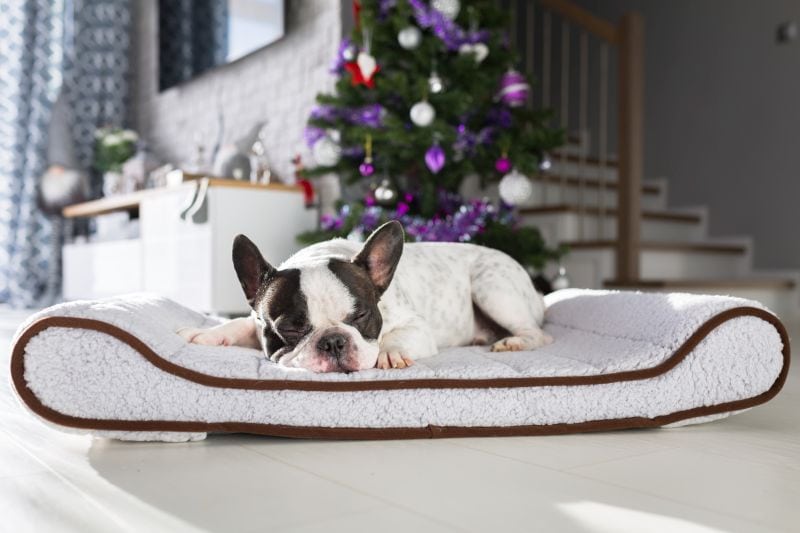
You can invariably find a dog bed that will make a stunning addition to your decor. It is important to not allow luxury to compromise support. Whatever style you select, make sure your dog can get on and off the bed.
Heated and Cooling Dog Beds
According to the American Kennel Club, a heated bed is a safe and beneficial option for many furry companions. If you have a dog suffering from osteoarthritis or hip dysplasia, or one who has overexerted himself playing Frisbee, he can get a lot of relief from a warm surface. Heat therapy can relax tenseness and ease soreness in the muscles.
Uncomfortable dogs are not the only ones who may seek heat though. Hairless breeds like the Chinese Crested or Peruvian Inca Orchid may require external heating sources. Similarly, dogs with hypothyroidism are often heat seekers.
If your dog has limited mobility, only use a heated bed when you can supervise your pet. Heat can be built into the bed or come in the form of a pad or electric blanket. Do not use human heating blankets.
You can cool your dog’s bed by using a water-filled system or cooling gel pads. Gel pads activate from pressure or the manufacturer designs them to remain at a set temperature for specific time frames, called phase changing pads. Cooling dog beds are ideal for large dogs or canines with double coats who seem to stay uncomfortably warm.
Hideaway and Burrow Dog Beds (Covered Beds)
Hideaway and burrow dog beds are fantastic if your four-legged friend likes to burrow under the covers or tries to hide under his mattress. Many burrow nest-style dog beds are better for small dogs because the material needed for a bigger structure can cause it to collapse.
You can also use a burrow bed instead of a kennel for a small dog who travels all the time but does not tend to stray.
Hooded beds constructed more like dog houses can accommodate larger dogs who like to feel cozy. Some are constructed like tents with quite a bit of support at the top and a base mattress at the bottom. You can also consider an igloo which builds support on all sides with an opening in the front. Some hideaway beds have an opening at both ends, which terrier may find interesting.
Orthopedic Dog Beds
Orthopedic beds provide support specifically for dogs with bone and joint issues. However, you do not have to wait for your dog to succumb to the pain and discomfort of elbow dysplasia before you invest in an orthopedic bed for your dog. The elimination of pressure points can provide preventative maintenance for large and giant dogs of any age.
If your dog is recovering from knee surgery or back problems, he can experience faster healing and much-needed rest from orthopedic support.
Orthopedic mattresses generally use the same memory foam found in human specialty sleep products. The higher the quality or density of the foam the more orthopedic support your dog will attain. Another widespread material used for orthopedic support is gel foam.
Outdoor Dog Beds
The most crucial additional element an outdoor dog bed has it that it is waterproof. Most outdoor beds are durable, also, but you need weather resistance so it does not get ruined.
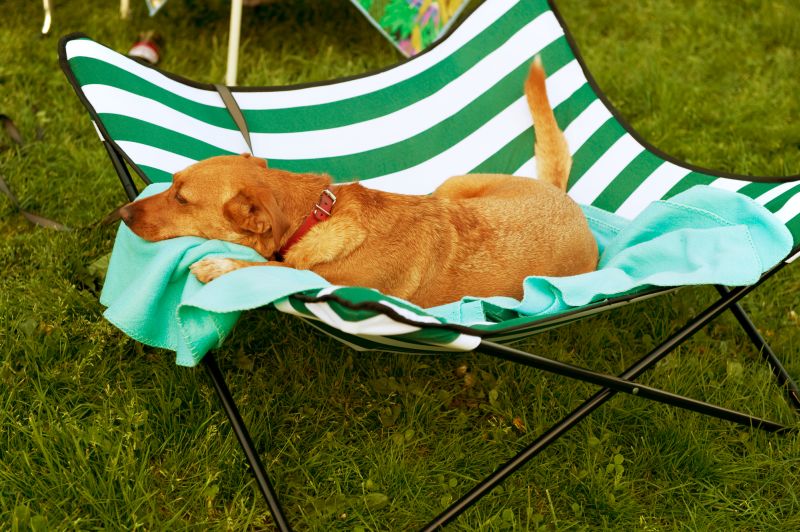
Many outdoor dog beds are elevated on steel or similar frames to keep the mattress or cushion off the ground, which can become waterlogged or muddy. Elevated beds also stay cooler than those that lay directly on the ground.
Some mattresses feature vinyl or plastic in case the bed blows into the swimming pool or similar accident happens. If your dog enjoys spending quite a bit of time outdoors, it makes sense for you to provide a comfortable outdoor dog bed.
Pads & Mats (Standalone Bed or Crate Mat)
Crate mats include anything from a shredded memory foam pad to a donut dog bed. When you size crate pads, the dimensions of the kennel are more pertinent than the measurements of your dog.
Sometimes your dog will only lay on a mat on the floor, rejecting the entire idea of a comfortable bed. In these cases, an orthopedic pad is best because it can be quite thin and still effective. Like typical dog beds, many pads have washable outer covers and water-resistant liners.
Pillow Dog Beds
One of the most common dog bed styles on the market, pillows come in many sizes. Although you probably picture a giant-sized plushy sleeping surface, pillow dog beds come in many forms, including supportive mattresses that more closely resemble big couch cushions.
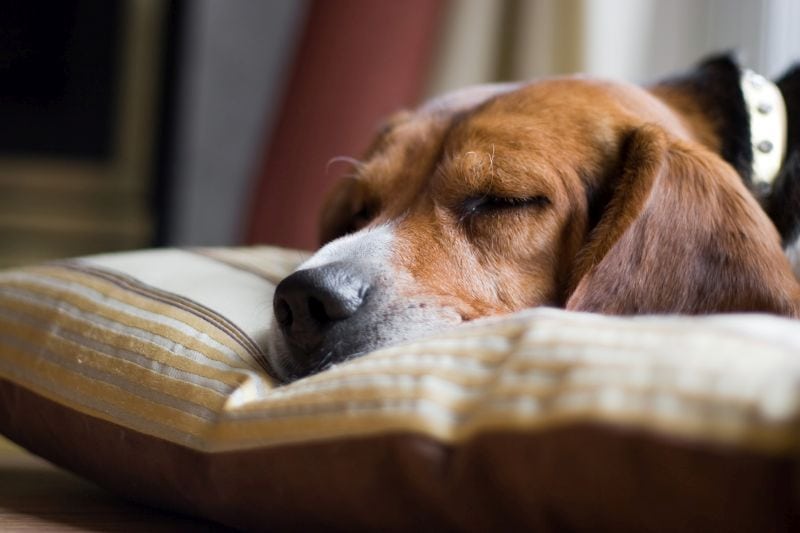
You can even find memory foam pillows that provide orthopedic support despite the bed’s shape.
Bedding (Blankets, Dills, Liners and Duvets)
Once you finally choose the perfect dog bed, your next quandary may be bedding accessories. Does your dog need a blanket? Should you get a liner?
Most dog beds come with a removable cover. An outside dog cover helps keep your pet’s bed clean. With light soils, you can generally just throw the cover into the washing machine. You may want to replace the cover with one of tougher material if your dog is rough on his bed.
You should always approach liners with the idea of protecting your investment. Memory foam, for example, can be destroyed by urine. You also do not want your dog’s designer bed to become permanently stained or acquire a noxious odor.
Blankets can add warmth to dog beds and thus, you should use them sparingly. Your Chihuahua may love a fleece blanket, but your Alaskan Malamute probably will not appreciate it.
Traveling Dog Beds
If you travel a lot and want to take your dog with you, a portable bed can facilitate it. Perhaps you have a show dog.
One of the factors that most contribute to the portability of a bed is the ability to fit it into your dog’s kennel. The combination of mattress and kennel may say den to your pet. You can experiment as some dogs prefer to sleep on their beds in a kennel with the door open.
Of course, if you decide to fit your dog’s bed into his kennel, you need to measure the crate so the bedding does not fold or scrunch. For small dogs, igloo dog beds may do well for traveling as your pup may naturally see it as a haven.
By Material
It is easy to take the material of a dog bed for granted. As your dog will touch it daily, it needs to feel good, which for animals is soft and cool. Moreover, you must consider both the material of the bed and the outer cover.
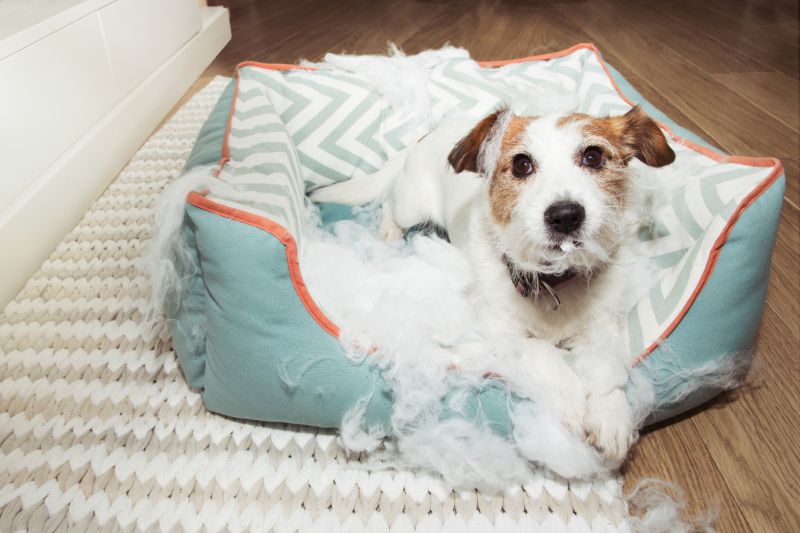
One of the main goals of the bed itself is to separate your dog from the floor. If you choose memory or gel foam, the bed does not need to be very thick. These materials provide a great deal of support, and your dog’s weight will not push it into the ground. Other materials you might consider are egg crate cushions, shredded memory foam, and polyester fill.
Dog bed covers likewise come in a large variety of materials.
- Nylon – Nylon is one of the most versatile and durable materials. It is also cool and easy to clean.
- Faux leather – Dissipates heat and is soft. You can wipe faux leather easily and it does not crack.
- Faux suede – Very durable and water- and stain-resistant, you can wash faux suede repeatedly.
- Cotton polyblend – This material is very soft and gives your dog bed a customized appearance, but it requires gentle handling and careful washing.
- Denim – Durable, tough, and machine-washable
- Fleece or flannel – Can trap heat but is great for small warmth-seeking dogs
You have not only comfort to consider but also washability and durability. Many people report their dog has torn up their dog bed or the cover within a few minutes. No bed or cover will be 100% dog-proof, but some materials endure abuse better than others.
By Size
How Should You Measure Your Dog’s New Bed?
In a perfect world, you should measure your dogs as he sleeps. Form a box around his sleeping form with your measurements, including the longest and widest points. Make sure all limbs and the tail fit into that rectangle. Add a few inches, specifically three to six inches for small dogs and 10 to 14 inches for medium to large dogs.
What is likely to happen when you try to measure your dog while he is sleeping? Inevitably, he will get up and try to interact with you unless he is utterly exhausted.
Alternatively, you can estimate your dog’s sleeping measurements. You can also measure him in a standing position. Your reference points are from his nose to the tip of his tail and the widest point of his shoulders. This gives you what the minimum dimensions of the bed should be. Always add a few inches to accommodate your dog’s movement during rest.
By Shape
Are you and your dog side sleepers, or does your dog sleep sprawled out like a lion? If your pet sleeps curled up, it will influence your decision about a dog bed.
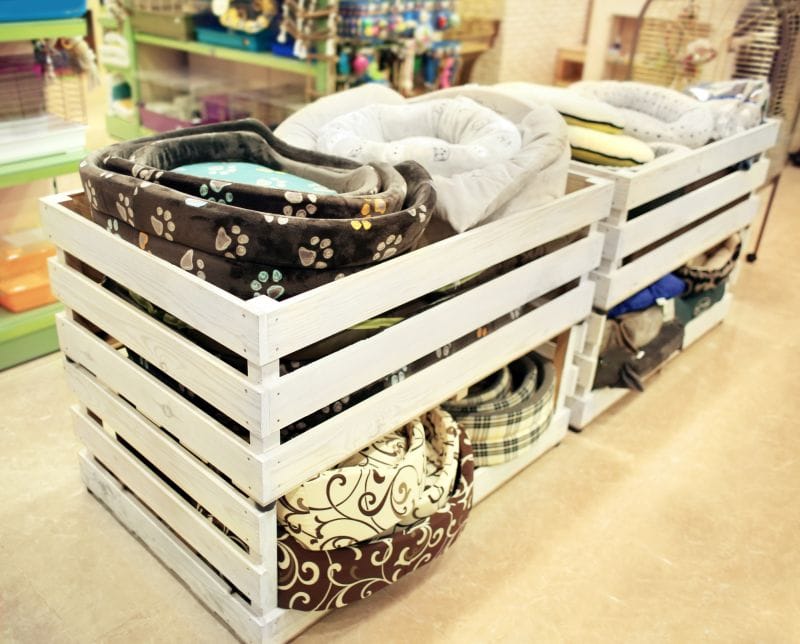
- Round – Round beds encourage dogs to circle and nest. They may require more outer protection against scratching.
- Oval – Oval beds are nice for dogs who engage in sleeping on their sides and curling up. The extra length may give them room to stretch. They also accommodate disproportionately long dogs like Corgis or Basset Hounds.
- Square – Square beds work well as long as you add room outside your measurements.
- Rectangular – Rectangular beds work best for large dogs since most of them are long in the body. The bed also give side-sleepers room if their limbs tend to dangle off the edge.
Conclusion
With the overwhelming number of products out there, choosing the best dog bed for your pet may seem almost impossible. However, the wide selection is a great advantage.
First, think about what is relevant to your dog. Does he need support and a good night’s rest? Does he have trouble staying cool, or does he like to sleep rolled in a tiny ball under the comforter?
Once you figure out what your dog needs, you can narrow down your choices. You might make further cuts based on what is important to you, like decorum, washability, durability, and style. With such a cornucopia of available dog beds, you will find one to fit both your needs.
